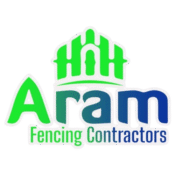Fencing rugged, hilly, or rocky land isn’t impossible—but it does require smart planning and a solid understanding of terrain challenges. Whether you’re securing farmland in Tamil Nadu’s hill districts or fencing a sloped plot near the Western Ghats, the right techniques and materials can make all the difference.
Why Terrain Matters in Fencing
Uneven land doesn’t just look different—it behaves differently too:
Water drains unevenly, which can undermine posts.
Rocky areas make digging difficult and reduce anchoring depth.
Hills and slopes create tension imbalances along the fence line.
Visual appeal suffers if panels or wires are misaligned.
These issues require special attention, especially in agricultural areas or rural development zones where terrain isn’t always flat.
Best Fence Types for Uneven or Rocky Terrain
Let’s explore fencing types that naturally adapt to rough surfaces:
1. Chain Link Fencing
Best for: Residential plots, farmland, boundary protection
Why it works: It’s flexible and conforms easily to curves and slopes.
Use with concrete or GI posts for better anchoring.
2. Barbed Wire Fencing
Best for: Agricultural land, grazing fields, large boundaries
Why it works: Barbed wire can follow irregular contours with ease.
Use intermediate support posts more frequently on steep terrain.
3. Concrete Pillar Fencing
Best for: Permanent installations on challenging terrain
Why it works: Heavy-duty and reliable. Combine with mesh or GI wire.
Use custom-cut or staggered-height posts.
4. Welded Mesh Fencing
Best for: Industrial properties or where appearance matters
Why it works: Strong structure and customizable height.
Needs precise installation on rocky land using chemical anchors.
5. Stepped Fence Panels
Best for: Visible, terraced land or urban sloped plots
Why it works: Creates a clean, stepped look that follows the slope.
Works best with concrete base and modular panels.
Techniques to Install a Fence on Uneven Terrain
Racking Method
Bends the fence slightly to match the land slope.
Ideal for chain link, mesh, and barbed wire fences.
Stepping Method
Installs fence panels in a stair-step fashion.
Used in modular, concrete, or welded fences.
Rock Drilling
Use rotary hammers or augers to dig into hard rock.
Posts are secured using grout or chemical anchor resin.
Laser Leveling
Use laser levels or transit levels to align posts accurately.
Especially helpful for commercial projects on large uneven plots.
Tools and Materials Checklist
| Tool/Material | Purpose |
|---|---|
| Rock drill or auger | For digging post holes in rocky soil |
| GI or concrete posts | Strong support for uneven pressure zones |
| Ropes and laser levels | Accurate alignment |
| Grouting compound | Anchoring in rock or loose soil |
| Weld mesh or GI wire | Durable fencing material |
| Post clamps & tensioners | Support wire tension across slopes |
Common Mistakes to Avoid
Using standard depth posts (they may uproot on sloped land).
Choosing wooden posts in rocky or water-draining terrain.
Ignoring post alignment, especially with visible boundary fences.
Skipping drainage planning, leading to erosion near posts.
Fencing Cost for Uneven Terrain
Fencing sloped or rocky land will cost more than flat terrain due to:
Higher labor effort and time
Need for specialized equipment
More frequent post spacing
Use of custom anchors and stronger materials
Conclutions:
For steep land, use shorter panels or modular sections to improve fit.
Choose materials based on terrain durability, not just price.
Use chemical anchoring if you can’t dig deeply into rock.
Consider hiring professionals for survey + fencing combo packages.
